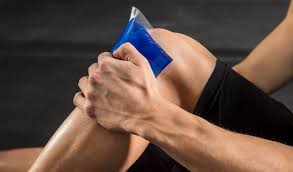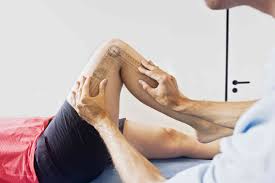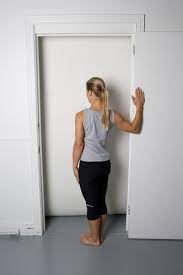Nearly everyone has experienced acute pain at some point in their lives. It might even be a condition that lasted days, weeks, or months. Acute pain, however, does stop at some point. Chronic pain, on the other hand, is unrelenting. It can be defined by pain that lasts longer than six months, but that’s really just a guideline. 
In reality, chronic pain is a way of life for millions of people and coping with it requires a commitment to a lifestyle that encompasses more than just a treatment. Physical therapy is one component of that lifestyle that, in combination with other therapies, can add to the tool kit of coping mechanisms when dealing with chronic pain. If you or someone you love is dealing with chronic pain as a result of injury or disease, a well-rounded approach can significantly improve quality of life.
Reduce Stress
There have been many studies (such as this one) that conclude stress and chronic pain are intertwined on various levels. At the most basic level, stress contributes to tight muscles, which in turn, contributes to increased pain. Similarly, the long-term effects of chronic stress cause the body to release hormones, such as cortisol, that cause inflammation in the body. Medical professionals agree finding ways to reduce and manage stress is essential for overall health, especially when dealing with chronic pain.
Eat Healthy
Food holds an incredible power in contributing to sickness or health. Since each body is different, there’s no right or wrong diet, but there are commonly problematic foods like dairy and gluten that can trigger inflammation in the body. Most doctors and dieticians recommend a diet high in fruits and vegetables, nuts, whole grains, and other plant-based foods and low in alcohol, sugar, fat, processed and fast foods. Talk with your medical professional about the best plan for you.
Move Often
It seems counterintuitive to move when it hurts to move, and it’s fair to say you should be careful because there are movements that can cause you more harm than good depending on the type of pain you’re dealing with. However, in general, exercise is good. You don’t have to hit the gym or spend all day doing push-ups, but a focus on being active benefits the body and the mind. Again, talk with your doctor and your physical therapist about what’s right for you.
Adjust Hobbies
Chronic pain has a way of bringing the focus towards those things we can no longer do. While it’s not ideal to have to give up the sports and other activities you love, try to embrace the opportunity to try new things. Replace problem-activities that cause flare ups with new hobbies such as painting, reading, taking classes, working puzzles, crafting, and learning a new language.
Give Yourself a Break
Dealing with chronic illness and pain takes a lot out of a person. It affects every aspect of a person’s life, from relationships to work to how you spend your leisure time. In addition to pain, you’re likely dealing with grief, depression, anxiety, guilt, and a host of other emotions. Give yourself a break. Not everyone will understand what you’re dealing with, so you’ll need to be your own best friend. Make self-care a priority and treat yourself kindly.
Get Help
Having to constantly explain your situation is exhausting. You need support in your battle with chronic pain so make sure you keep the conversation current with family and your medical team. Set and keep appointments with the dentist, eye doctor, physician, specialists, and physical therapist. Find a reliable massage therapist. Allow friends and family to help when they offer to run the kids around or clean the house. Subscribe to a food service a few times a month. In other words, do what you need to do to reduce stress while providing care for yourself and your family.
How Physical Therapy Can Help
Coping with chronic pain is all about finding a consistent pattern of behaviors that work for you and sticking with it. Introduce one thing at a time and within a few months you’ll be working towards a calendar with space etched out for meditation, relaxation, complete and restorative sleep, a healthy diet, regular movement, and doctor’s appointments.
For the physical therapy component, treatment depends on your condition but can include ways to correct movement patterns, strengthen weak muscles and stretch tight ones, ice/heat, and massage. In addition, your PT can help create a plan for safe exercise and provide advice on how to best address occupational and recreational activities.
Read more about other people’s experience with chronic pain here: https://creakyjoints.org/support/things-you-only-understand-if-have-chronic-pain/




 Working with your physical therapist regarding knee pain and instability can not only improve your current pain level and mobility issues, but can help you maintain the strength and control to avoid strains and injuries in the future. Once your knee instability and pain have improved and you get the green light from your doctor or PT, try low impact activities like yoga, swimming, walking, and tai chi to keep the progress going.
Working with your physical therapist regarding knee pain and instability can not only improve your current pain level and mobility issues, but can help you maintain the strength and control to avoid strains and injuries in the future. Once your knee instability and pain have improved and you get the green light from your doctor or PT, try low impact activities like yoga, swimming, walking, and tai chi to keep the progress going. 


 Door Stretch
Door Stretch





